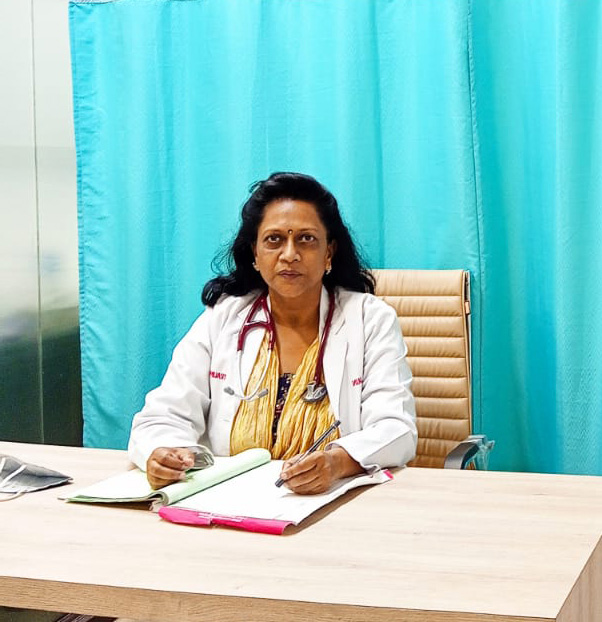Explains Delhi’s Top Laparoscopic Surgeon, Dr Amita Jain
Surgery is a remarkable feat of modern medicine, where skilled and experienced doctors work tirelessly to heal and restore the human body. Surgery is always a last resort but often proves to be the best option for a patient. It is a testament to the human ability to save and restore life.
Minimally invasive surgery is a kind of surgery that involves small incisions (cuts) and a few stitches, unlike conventional open surgeries where the surgeon makes a large incision to access the affected area. This technique has revolutionized surgery, making it less traumatic for patients, reducing hospital stays and recovery time, and increasing the accuracy of procedures.
There are different types of minimally invasive surgery that are practised today that have been explained by Delhi’s leading laparoscopy surgeon Dr Amita Jain Some of them are:
Laparoscopic surgery:
A surgical technique that uses a laparoscope, a thin tube with a camera and light, to view the internal organs and perform surgical procedures through small incisions made in the abdominal wall.
Endoscopic surgery:
A surgical technique that uses an endoscope (a flexible tube) with a camera and light at the tip to diagnose diseases in the oesophagus, stomach, colon, ears, nose, throat, etc.
Robotic surgery or robotic-assisted surgery, uses robotic arms controlled by a surgeon to perform complex surgical procedures through small incisions.
Dr. Amita Jain, a reputed laparoscopic surgeon describes the process of minimally invasive surgery in this article.
Anaesthesia:
The patient is first given anaesthesia to ensure that they are comfortable and do not experience pain during the surgery. Depending on the type of surgery, either general anaesthesia or local anaesthesia may be used.
Incisions:
The surgeon makes one or more small incisions usually near the belly button, less than an inch in size. These incisions are called “ports” and are used to insert the laparoscope and other surgical instruments.
Laparoscope insertion:
The laparoscope, a thin tube with a camera and a light at the end, is inserted through one of the ports. and carbon dioxide gas is pumped through the tube to inflate the belly size so that the surgeon can see the organs more clearly. The camera transmits images of the inside of the body to a monitor in the operating room, allowing the surgeon to see the surgical site in real-time.
Operation begins:
Using the surgical instruments, the surgeon performs the necessary procedure, such as removing a tumour or repairing a hernia. Because the incisions are small, the surgeon may need to make several small incisions to complete the surgery.
Closure:
After the surgery is complete, the carbon dioxide is released from the patient’s body, the small incisions are closed with sutures or clips and a dressing is applied.
Recovery room: After surgery, the patient will be moved to a recovery room where they will be monitored for signs of adverse reactions. For instance, some people feel groggy and disoriented which are common side effects of the anaesthetic. The patient will likely be discharged within a few days since the recovery period is much shorter than open surgery. Instructions will be given to the patient on how to keep the wounds clean, take medications as prescribed, and when to return for a follow-up visit.
One of the most lucrative benefits of this type of surgery is its short recovery period. This type of surgery requires small incisions, which means less tissue damage and less post-operative pain. This also helps to reduce the risk of infection and other complications. Additionally, it reduces hospital stays and recovery times, allowing patients to get back to their normal activities more quickly. Standard hysterectomy recovery can take up to eight weeks, while minimally invasive hysterectomy takes three to four weeks.

Dr Amita Jain is a surgeon with the highest degree of professional competence, precision and surgical craftsmanship. Performed all complicated general surgery procedures with in depth knowledge of invasive and few minimal invasive and onco surgical techniques. Underwent special training in trauma, executed various trauma-related complex life-saving neurosurgical procedures, reconstructed injured mangled limbs and performed vascular and reconstructive procedures with critical care.
Dr Amita Jain holds 28 plus years of rich experience in Trauma and General Laparoscopic Surgeries (including Gallbladder stone removal, appendix removal, hernia repair surgery, piles and fissure surgeries). She was the Professor Surgery of at the Army College of Medical Sciences and Base Hospital Delhi Cantt. In 1994 she was commissioned as Surgeon under the United Nations Mission in Congo. From 2020 to 2022, she worked with Bansals Hospital. Currently, Dr Amita Jain is the Senior Consultant, (Speciality: General and Laparoscopic Surgeon) at Artemis Lite Hospital, New Delhi and Sr. General and Laparoscopic Surgeon at Rainbow Children Hospitals, Malviya Nagar, Delhi.
